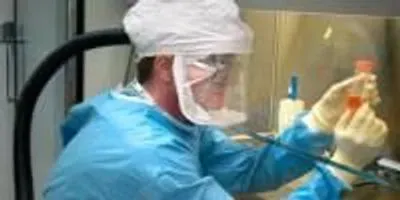Don't Forget About Total Cost of Ownership
Biological safety cabinets (BSCs) are crucial for the safety of staff and the protection of products, so it’s important to know when they should be upgraded.
Luckily, many of the signs that you should buy a new BSC are pretty common sense.
 The Baker Company’s latest Class II, Type B2 biological safety cabinet, the BioChemGard.“Corrosion on the outside of the cabinet is bad, corrosion on the inside is worse,” says Thermo Fisher Scientific (Waltham, MA) technical applications specialist Marc Dunn of one major sign that you should replace a cabinet. He adds that rust on the plenums inside the BSC is particularly bad
The Baker Company’s latest Class II, Type B2 biological safety cabinet, the BioChemGard.“Corrosion on the outside of the cabinet is bad, corrosion on the inside is worse,” says Thermo Fisher Scientific (Waltham, MA) technical applications specialist Marc Dunn of one major sign that you should replace a cabinet. He adds that rust on the plenums inside the BSC is particularly bad
As with many other types of lab equipment, when replacement parts for your BSC are becoming scarce or will be obsolete in six months to a year, you’ll want to consider buying a new cabinet. A BSC that requires constant servicing to keep running or that is failing its annual NSF certification test is also one you should probably replace, Dunn adds.
Age is also a factor, according to Cybelle Guerrero, national sales manager at The Baker Company (Sanford, ME).
“If the cabinet’s more than 25 years old, it’s probably time to start thinking about budgeting for a new cabinet because of all the improvements to design that have been done over the years,” Guerrero says.

“They might have a bad day and have some sloppier aseptic technique that day,” she says. “So you want to have a design that allows for forgiveness in a dynamic setting.”
Dunn adds today’s BSCs are also quieter and use DC motors which are more durable, energy efficient, and maintenance-friendly than the AC motors of older cabinets.
As with anything else, if your current cabinet is running fine, passing its annual certification, parts are still available, and maintenance costs are low, you probably don’t need a new BSC, the two experts say. Dunn adds that if you only need to protect a product in your lab, rather than the operators, you may not even need a BSC— something like a clean bench may suffice.
Options for buyers on a budget:
- Even on the low-cost end of the BSC spectrum, you can get great quality
- Do your research on the options available to ensure you get the best value
- Leasing programs
- Some vendors have special pricing for academic labs
Other considerations:
- Once you’ve bought your BSC, take advantage of training from the vendor to ensure you and your staff use it properly
- Do a proper risk assessment through your biosafety office
- Make sure the BSC fits the space and workflow
- Ask questions such as what the power consumption is, if spares are readily available, cost of filters, how long the warranty is, and if you really need to exhaust to atmosphere
 Thermo Scientific’s newest Class II, Type A2 biological safety cabinet, the 1300 Series.“Also if you’re replacing an old BSC, you have the inconvenience of decommissioning the old BSC and that might mean making it safe,” he says. “You might need to fumigate to make it safe and …you have to dispose of it responsibly. All of these can be managed.”
Thermo Scientific’s newest Class II, Type A2 biological safety cabinet, the 1300 Series.“Also if you’re replacing an old BSC, you have the inconvenience of decommissioning the old BSC and that might mean making it safe,” he says. “You might need to fumigate to make it safe and …you have to dispose of it responsibly. All of these can be managed.”
Both experts stress that users must consider the total cost of ownership when purchasing.
“Not all cabinets cost the same,” Guerrero says. “If you can factor in cost of ownership over the life of the cabinet as part of your consideration and then your justification for purchase, then that’s something that should be looked at.”
And, of course, safety of lab staff trumps any kind of monetary cost.
“Try to spend as much as your budget allows to get the best device possible with the best features, simply because safety cannot and should not be compromised,” Dunn says.













